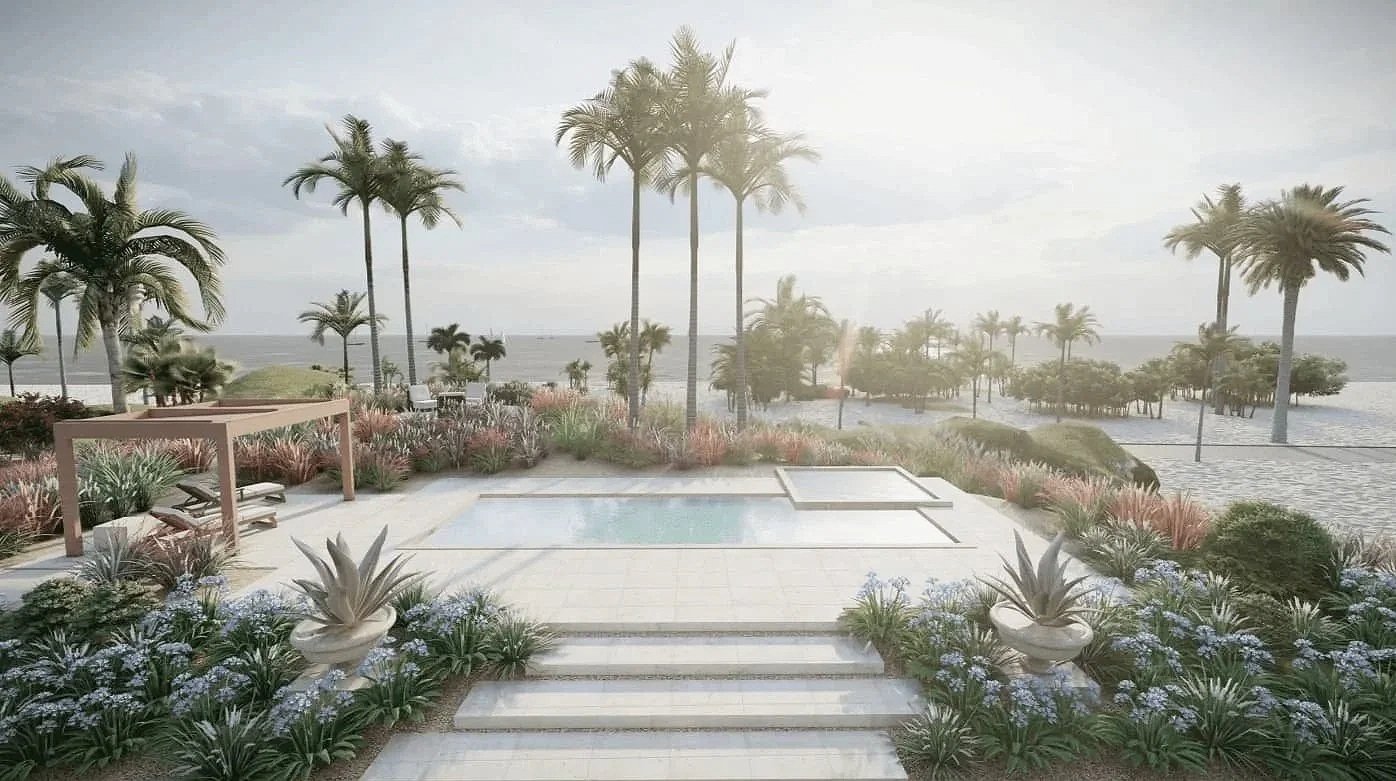Landscape Architecture & Garden Design Studio in San Diego, Southern California & Spain
LASD Studio crafts landscapes defined by inherent elegance, ecological balance, and thoughtful, timeless design.
“Where Art & Nature evolve into Legacy.”
LASD Studio Landscape Design Philosophy
“Where Art & Nature evolve into Legacy.”
We design landscapes that blend architectural style, artistic sensitivity, and ecological intelligence.
From Spanish Colonial Revival and Mediterranean estates to Mid-Century Modern and Contemporary homes, every project is a thoughtful response to architectural character and the deeper perception of place.
By acknowledging the specific Style and Epoch of Art in Landscape Architecture, we create designs that also respond to global ecological challenges.
Each project becomes a contemporary living artwork — supporting biodiversity, restoring natural rhythms, and adapting to changing conditions.
We design Landscapes as Evolving Systems , the guiding theory behind all LASD Studio work.
Video of LASD Studio landscape design philosophy
Services & Scale
We design Private Gardens and Residential Estates, as well as HOA and Communities, Commercial and Cultural landscape design projects. Our work also includes Landscape Restoration and Regional Design, Land Art and Museum Site Design, Ecological Restoration and Landscape Rehabilitation Consulting - shaping resilient environments across San Diego, Southern California, Spain and worldwide.
Our Proprietary Software & Landscape Design System
Over many years of research and professional practice, we created a unique proprietary software and design system used exclusively within LASD Studio. It ensures unparalleled accuracy in design development, detailed construction estimation, project management, and flawless on-site execution. With this system, every landscape progresses from concept to reality with exceptional precision.
~ Private Gardens & Estates ~
LASD Studio creates bespoke landscape architecture & garden design for private homes and estates, blending architectural clarity, artistic sensitivity, and ecological intelligence to shape enduring outdoor environments.
~ Communities & HOA’s ~
LASD Studio designs thoughtful, resilient landscapes for Communities & HOA’s developments — creating cohesive outdoor environments that elevate shared living, strengthen identity, enhance long-term sustainability, ROI and maintenance efficiency.
~ Commercial & Cultural Landscapes ~
LASD Studio creates commercial and cultural landscapes that unite ecological resilience, architectural clarity, and artistic expression. We design environments that strengthen identity, support biodiversity, and elevate the cultural experience & perception of place.
Our Landscape Design Process
We guide your project from first conversation to its complete realization, simplified project steps:
1. Submit form below or click here, to meet on site or on-line;
2. Conceptual Landscape Design & Presentation;
3. Detailed Landscape Architectural Design Package & Construction Estimation;
4. Permitting (if required);
5. Tender submission and BID collection (if required);
6. Landscape Construction with full supervision and project management;
7. Landscape Maintenance & Guidance (if required).
Reflections of Landscape Design Journeys Together
“I don’t know anyone in California who can design gardens like Yura from LASD Studio — truly gifted.”
“The brilliance of their design is unmatched. LASD Studio took my ideas and shaped them into a garden that feels like an extension of my dreams — timeless, refined, and alive.”
“What impressed me most was the personal care. Yura and his team understood my vision and delivered a landscape beyond expectations, on time and within the agreed budget.”





















